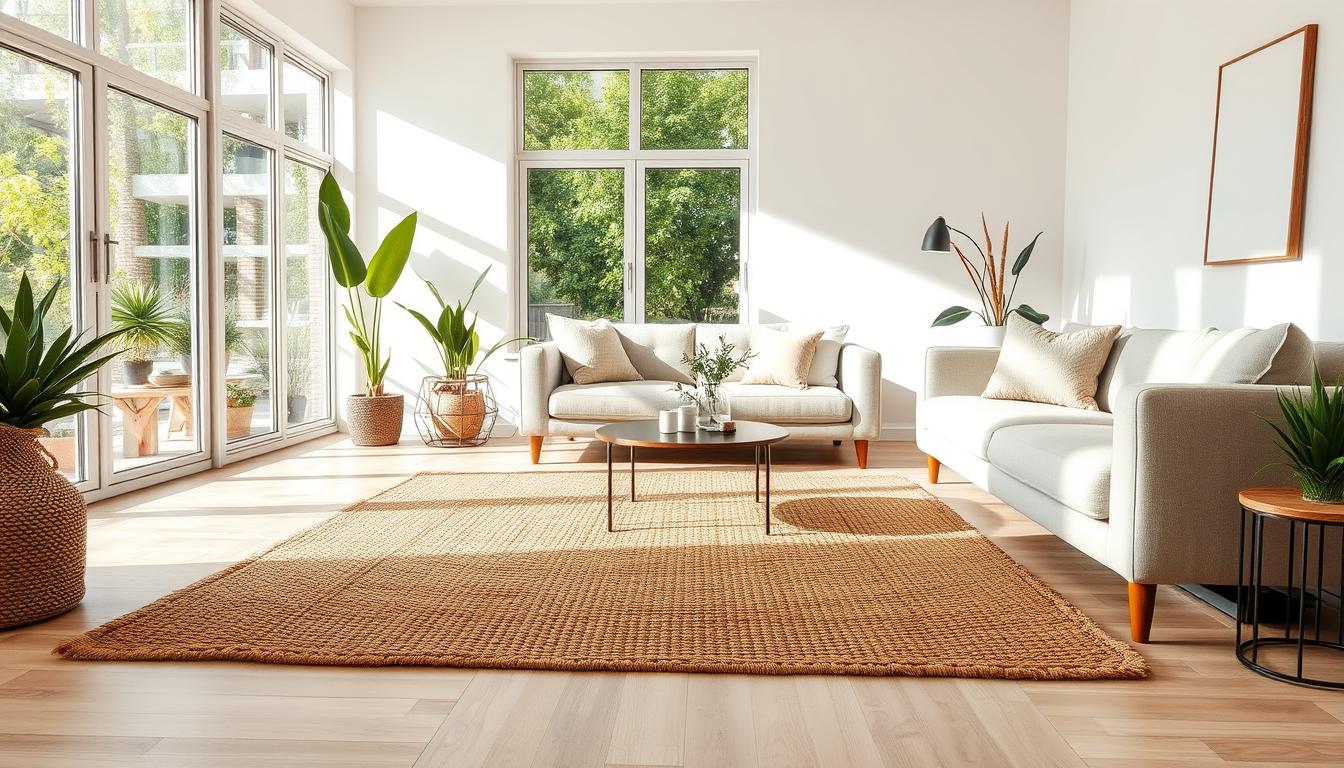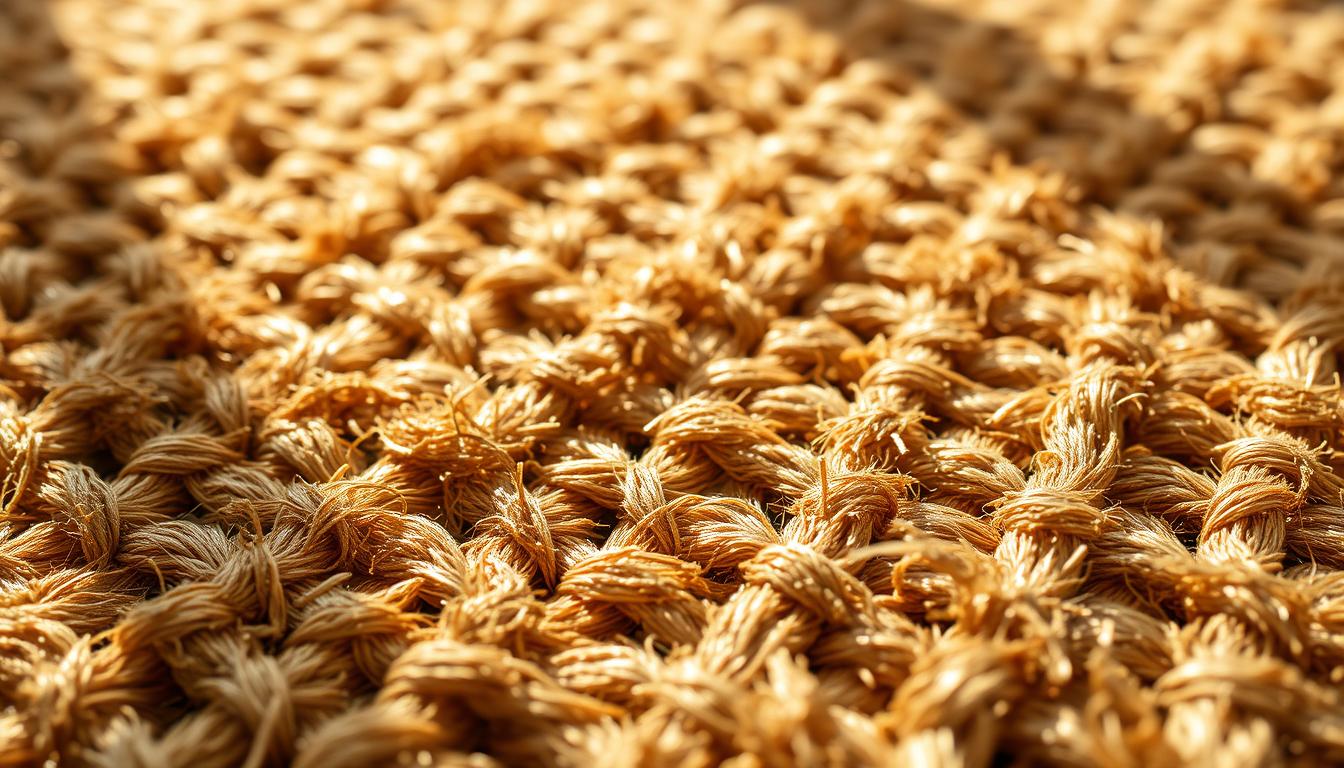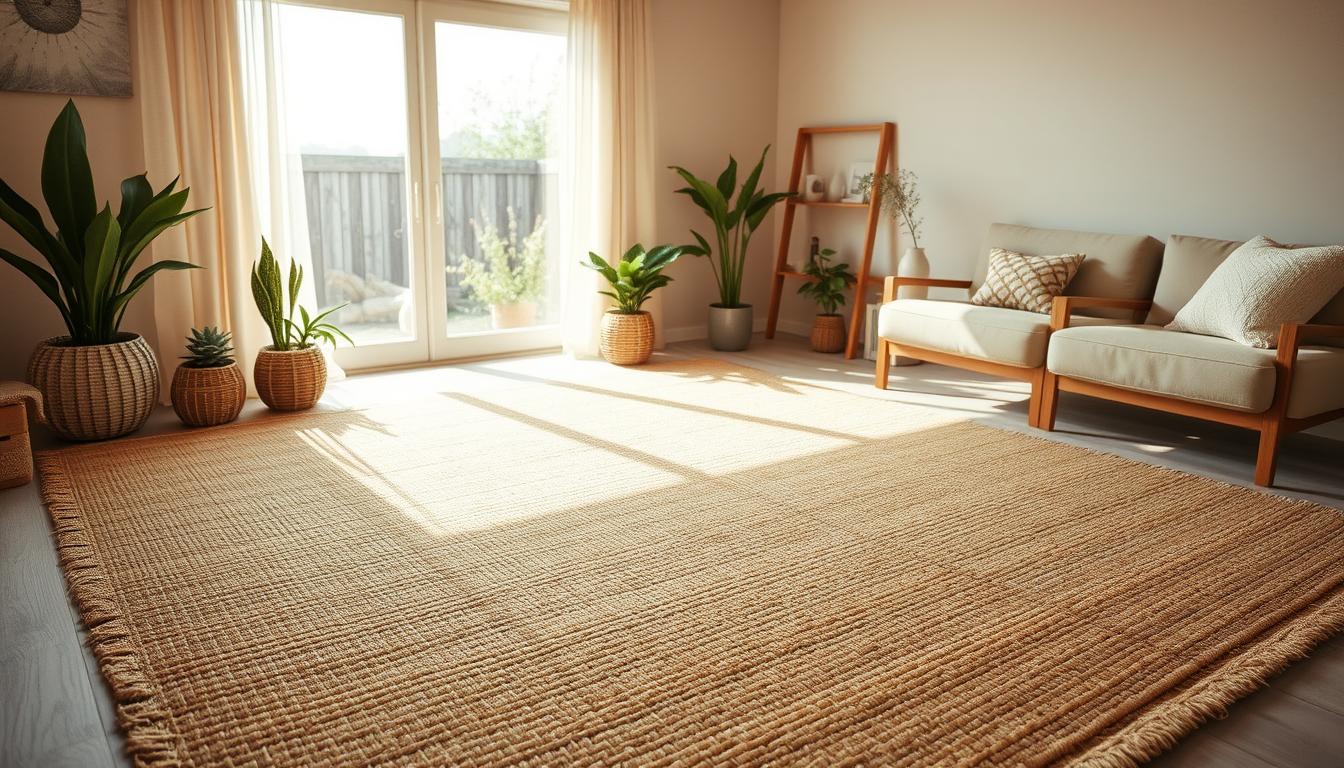
6 Honest Reasons Jute Rugs Are Good
What if your flooring choice could visually warm a room while quietly supporting Earth-friendly practices? This question lies at the heart of today's design conversations as more homeowners rethink conventional decor options.

Plant-based floor coverings offer surprising versatility. Their earthy textures create inviting spaces, blending effortlessly with modern farmhouse aesthetics or minimalist layouts. Unlike synthetic alternatives, these renewable materials develop unique patinas over time – each imperfection telling its own story.
Durability often surprises first-time buyers. When properly maintained, these woven pieces withstand daily foot traffic while maintaining structural integrity. For households with pets, their natural breathability helps minimize odors without harsh chemicals.
Care considerations matter. While not recommended for damp basements, strategic placement in living areas maximizes their lifespan. Recent surveys show 60% of owners appreciate the balance between comfort and resilience, particularly in high-use zones.
Key Takeaways
- Eco-conscious choice with biodegradable properties
- Adaptable texture complements multiple decor styles
- Naturally resistant to static and dust accumulation
- Develops character through subtle color variations
- Requires specific cleaning methods for longevity
Introduction to Jute Rugs: Nature Meets Style
Imagine walking barefoot across a surface that connects your living space to equatorial farmlands. This tactile experience begins with the jute plant, a renewable resource transforming modern interiors. Its journey from field to floor reveals why designers call it nature’s answer to sustainable elegance.
What Are Jute Rugs?
Crafted from plant fibers, these floor coverings originate from the Corchorus species. Thriving in tropical climates, the stalks undergo a meticulous process: harvested, soaked, and dried to reveal their signature golden strands. Unlike synthetic alternatives, each piece carries subtle variations that reflect its organic roots.
The Natural Origin of Jute Fibers
Second only to cotton in global cultivation, this material flourishes in the fertile river basins of South Asia. Farmers separate the bark through a technique called retting, where natural microbes break down plant matter. The resulting fibers gain strength and sheen during sun-drying – a method unchanged for centuries.
| Feature | Jute | Cotton | Synthetic |
|---|---|---|---|
| Source | Plant stalk | Seed fibers | Petroleum |
| Biodegradability | 100% | High | Low |
| Texture | Coarse weave | Soft twist | Uniform pile |
When you choose textiles crafted from plant fibers, you’re selecting a material that breathes. Its porous structure regulates humidity naturally, while the earthy tones adapt to seasonal decor changes. This versatility explains its enduring popularity across continents.
Are jute rugs good? Evaluating Benefits and Drawbacks
How do natural fiber floor coverings balance style with practicality? The answer lies in their unique blend of strengths and considerations. Timeless appeal meets eco-conscious design, creating pieces that adapt to evolving decor trends while minimizing environmental impact.

Natural weaves develop richer character over years of use. Their neutral tones act as visual anchors, allowing bold furniture or artwork to shine. Unlike synthetic alternatives, these textiles won’t trap static or dust mites – a boon for allergy-prone spaces.
Consider this comparison when evaluating materials:
| Factor | Natural Fiber | Wool | Polyester |
|---|---|---|---|
| Lifespan | 5-10 years | 15-20 years | 3-7 years |
| Cost | $$ | $$$$ | $ |
| Maintenance | Special care | Professional cleaning | Machine washable |
While natural options require specific cleaning methods, their pros and cons analysis reveals surprising advantages. They resist color fading better than many synthetics when kept from direct sunlight. Spills demand immediate attention, but routine vacuuming preserves their textured charm.
For households seeking sustainable style, these earth-friendly coverings deliver lasting value. Their breathable structure prevents moisture buildup, while the raw aesthetic pairs effortlessly with modern and traditional interiors alike. With proper placement and care, they become heirloom-quality accents rather than disposable decor.
Stylish and Versatile Decor Choice
Natural textures become design chameleons when woven into floor coverings. These earth-toned pieces effortlessly bridge gaps between contrasting furniture styles, acting as visual mediators in eclectic spaces. Their organic golden undertones inject warmth without dominating color palettes – a minimalist’s secret for balanced interiors.
Coastal dwellings gain authentic seaside character through fibrous weaves that mimic driftwood textures. Layer one beneath weathered wood furniture to amplify beach-house vibes. Bohemian enthusiasts leverage their raw simplicity, creating layered looks with kilim pillows and trailing pothos plants.
The magic lies in what these textiles don’t do. Unlike bold-patterned alternatives, they never clash with existing decor elements. This makes them ideal for rooms transitioning between design eras or those needing subtle cohesion. Urban lofts and farmhouse kitchens alike benefit from their understated elegance.
Consider them your interior’s neutral canvas. Pair with mid-century modern chairs for retro charm or surround with antique mahogany for traditional appeal. Their adaptable nature allows reinvention with seasonal accents – swap throw pillows or wall art while keeping the foundation intact.
Unique Textural Appeal and Warmth
Have you ever noticed how a room's atmosphere shifts with its tactile elements? Natural fibers transform flat surfaces into dynamic landscapes through their intricate weaves. These organic materials don’t just lie underfoot – they shape spatial perception through light play and shadow casting.
Enhancing Room Depth with Texture
Design experts recognize texture as a silent architect of interior spaces. Sheena Murphy of nune studio observes:
‘Layered surfaces create quiet dimension – like visual whispers that make rooms breathe.’
Her team frequently uses chunky woven pieces to add complexity without overwhelming minimalist layouts.
Three elements maximize textural impact:
- Varied fiber thickness creating light-catching ridges
- Multi-tonal strands that mimic natural shadow patterns
- Open weaves allowing light filtration through the material
Rooms gain depth when textured floor coverings interact with daylight. Morning sun highlights raised patterns, while evening lamps cast dramatic silhouettes across the weave. This ever-changing display prevents static, one-note environments.
For those seeking softer variations, blended fiber options maintain organic charm while increasing underfoot comfort. The key lies in balancing tactile roughness with visual harmony – a design tightrope these natural materials walk effortlessly.
Eco-Friendly and Sustainable Benefits
Ever considered how your decor choices ripple through ecosystems? Plant-based floor coverings offer more than visual appeal—they create positive environmental feedback loops. Their production and disposal cycles align with Earth’s natural rhythms.
Renewable Material Advantages
Vegetable fibers regenerate faster than petroleum-based alternatives. Farmers harvest new crops every 4-6 months without depleting soil nutrients. This rapid renewal cycle makes them infinitely reusable resources compared to synthetic materials needing centuries to decompose.
Three key advantages stand out:
- Compostable fibers enrich soil instead of lingering in landfills
- Growth processes absorb CO₂ at higher rates than forests
- Natural cultivation supports biodiversity in farming regions
Impact on Interior Air Quality
Your living spaces breathe easier with plant-derived textiles. Unlike plastics releasing volatile compounds, these materials maintain neutral air profiles. Their porous structure absorbs humidity while resisting mold—ideal for allergy-sensitive homes.
Manufacturers often use plant-based dyes from indigo or turmeric. This eliminates toxic runoff from chemical coloring processes. Over years of use, your floors stay vibrant without compromising respiratory health.
Choosing natural fibers creates healthier environments indoors and out. From field to living room, every step honors ecological balance while delivering timeless style.
Low Maintenance and Cleaning Considerations
How do you preserve natural floor coverings without compromising their organic charm? Proper care ensures these textiles age gracefully while maintaining their structural integrity. Let’s explore methods that balance simplicity with effectiveness.

Effective Cleaning Methods
Regular upkeep prevents deep-set dirt. Use a vacuum without rotating brushes to protect loose weaves. For spills, act quickly – blot with dry cloths before applying cleaning solutions.
| Method | Tools Needed | Frequency |
|---|---|---|
| Surface Cleaning | Soft-bristle brush | Weekly |
| Stain Treatment | White vinegar solution | As needed |
| Deep Refresh | Outdoor shaking | Seasonally |
Common Mistakes to Avoid
Water exposure ranks as the top threat. Even damp mopping can warp fibers and cause discoloration. Harsh chemicals break down natural binders, leading to premature fraying.
| Error | Consequence | Prevention |
|---|---|---|
| Steam cleaning | Fiber degradation | Dry methods only |
| High-suction vacuums | Pulled threads | Adjust settings |
| Direct sunlight | Fading | Rotate periodically |
For persistent stains, mix equal parts water and white vinegar. Test solutions on hidden areas first. Our pros and cons analysis details why gentle care extends lifespan significantly.
Durability Concerns in High-Traffic Areas
How do you maintain natural elegance where feet tread most? These organic floor coverings face unique challenges in active spaces. Their fibrous construction demands strategic planning to balance aesthetic appeal with practical resilience.
Managing Wear and Tear
Quality matters when selecting pieces for entryways or kitchens. Longer fibers in dense weaves resist fraying better than loosely spun alternatives. Rotate floor coverings seasonally to distribute footfall patterns evenly across the surface.
Non-slip pads underneath reduce friction against hard floors. This simple step prevents premature thinning where people frequently pivot. Address spills immediately using dry cloths to prevent moisture from weakening natural binders.
Well-made options from reputable brands often endure daily use for years. Use vacuum cleaners without rotating brushes to preserve structural integrity. Embrace subtle patina development as part of their evolving character rather than flaws.
For detailed care methods, consult our durability guide covering advanced maintenance techniques. Proper care transforms these textiles from disposable decor to lasting investments.
FAQ
Can jute rugs handle heavy foot traffic?
While natural fibers like jute are strong, they’re best suited for low-to-moderate traffic zones. In high-traffic areas, consider layering them with durable synthetic options like polypropylene for added protection.
How do you clean spills on a jute rug?
Blot spills immediately with a dry cloth. Avoid water or harsh cleaners, as moisture can weaken the fibers. For deeper stains, professional cleaning is recommended to preserve texture and color.
Do jute rugs contribute to better indoor air quality?
Yes! Unlike synthetic materials, jute doesn’t emit volatile organic compounds (VOCs). Its natural composition makes it hypoallergenic, reducing airborne irritants in your living space.
Will a jute rug add warmth to a modern design?
Absolutely. The earthy tones and organic texture create contrast in minimalist spaces. Pairing one with sleek furniture or metallic accents balances rustic charm with contemporary style.
Are jute rugs pet-friendly?
While eco-friendly, these rugs can trap pet hair and show stains easily. Opt for tightly woven styles or treat them with a stain-resistant spray if you have active pets or kids.
Why choose jute over other natural fibers?
Jute is biodegradable, renewable, and requires less water to grow compared to cotton. Brands like Safavieh and nuLOOM offer styles that blend sustainability with timeless interior appeal.









